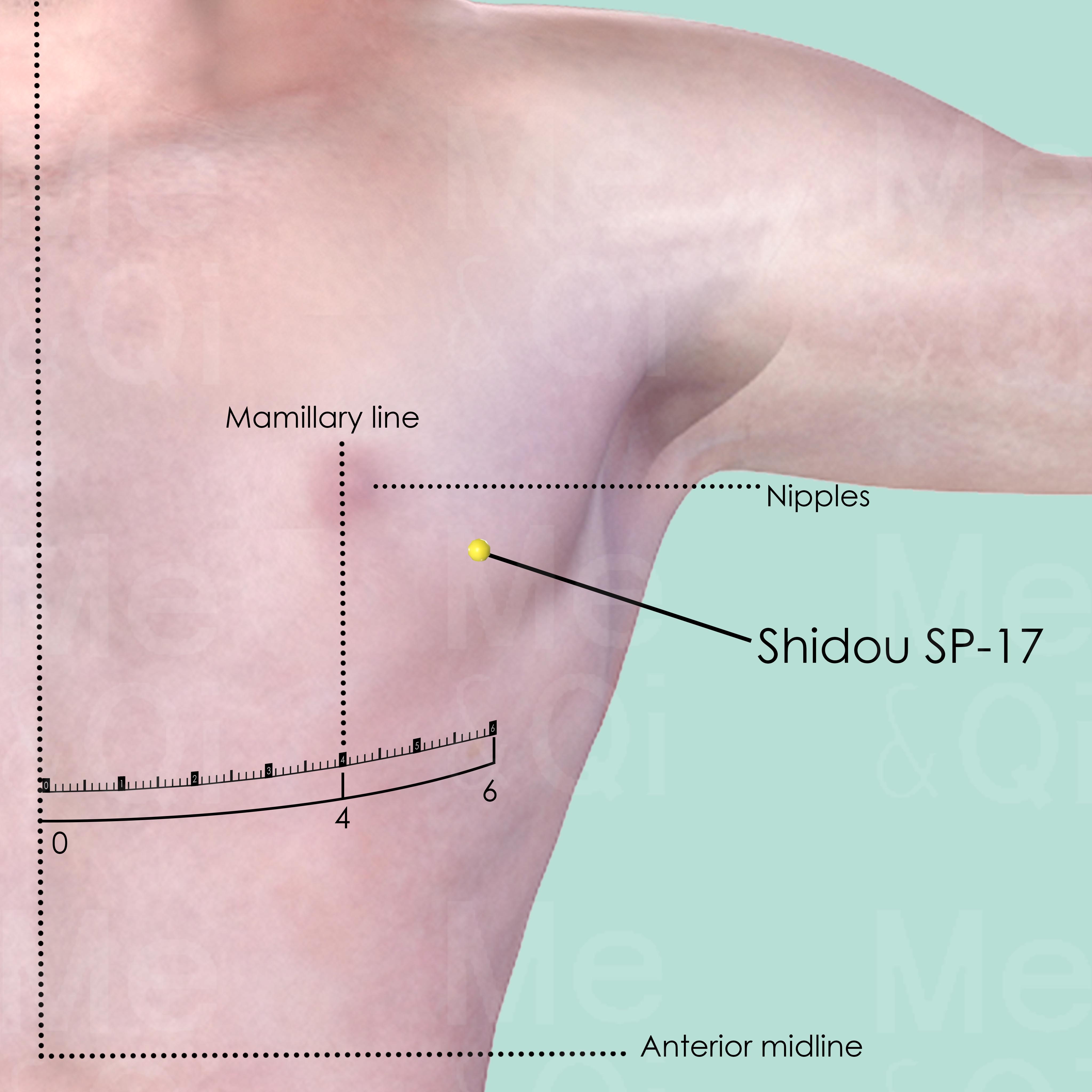Diaphragm Painaccording to TCM
Symptom family: Diaphragmatic Symptoms
Did you mean? Diaphragmatic Fullness Stuffiness Of Diaphragm
What is Diaphragm Pain?
Diaphragm pain, often experienced as a cramp or ache in the muscle that separates the chest and abdominal cavities, can be discomforting and sometimes debilitating. It's typically characterized by a sharp or stabbing sensation and can be triggered by various activities, including breathing, laughing, or physical exertion. The diaphragm plays a crucial role in respiration, and pain in this area can significantly impact breathing patterns and overall comfort.
TCM Perspective on Diaphragm Pain
Traditional Chinese Medicine (TCM) approaches diaphragm pain as a symptom indicative of deeper imbalances within the body’s energy systems. Unlike Western medicine, which often focuses on the physical aspects of such pain, TCM considers both physical and energetic disharmonies.
This pain is frequently associated with Qi Stagnation, Phlegm accumulation, or a disharmony in the body's elemental Yin and Yang. TCM emphasizes understanding the underlying patterns of disharmony that lead to diaphragm pain and treating these root causes to alleviate symptoms.
Causes of Diaphragm Pain According to TCM
In TCM, diaphragm pain is often attributed to specific imbalances or blockages in the body’s energy pathways. One common cause is Lung Qi Stagnation, where the life force energy does not flow freely, leading to discomfort and pain.
Another potential cause is Phlegm accumulation, particularly Cold-Phlegm, which can congest the lungs and diaphragm area. TCM treatments focus on identifying these patterns through a holistic assessment of the individual, including their physical symptoms, emotional state, and lifestyle factors, to tailor an effective treatment plan.
TCM Herbal Formulas for Diaphragm Pain
TCM offers several herbal formulas for treating diaphragm pain, with the choice of formula depending on the identified underlying pattern. For instance, San Zi Yang Qin Tang, which includes White Mustard Seeds (Bai Jie Zi), is effective for patterns like Cold-Phlegm in the Lungs or Qi Stagnation.
This formula, characterized by its Bitter and Warm properties, works by transforming Phlegm-Cold and clearing congestion, thereby alleviating pain. The treatment approach in TCM is always personalized, focusing on balancing the specific disharmonies identified in each individual.
See more details below about San Zi Yang Qin Tang, a herbal formula used to address diaphragm pain.
- By Formula Type
- Formulas that warm and transform phlegm-Cold
Formulas that warm and transform Phlegm-Cold
Diaphragm pain can be treated by these formulas when it arises from cold causing phlegm accumulation, needing actions that warm and resolve phlegm.
One such formula is San Zi Yang Qin Tang, with white mustard seeds as a key herb.
Acupoints for Diaphragm Pain
TCM also utilizes acupuncture as a method to address diaphragm pain. One notable acupoint is Shidou SP-17, located in the Spleen Channel. This point is found 6 cun lateral to the anterior midline and 2 cun lateral to the mamillary line, in the 5th intercostal space.
Stimulating Shidou SP-17 is believed to resolve Food Stagnation and aid in relieving the pain and discomfort associated with diaphragmatic issues. Acupuncture, in combination with herbal treatment, forms a comprehensive approach in TCM to treat diaphragm pain by restoring balance and promoting the smooth flow of Qi and blood throughout the body.
See more details below about Shidou SP-17, an acupoint used to address diaphragm pain.
- By Meridian
- Spleen Channel

Shidou SP-17
6 cun lateral to the anterior midline, 2 cun lateral to the mamillary line, in the 5th intercostal space.
TCM Herbs for Diaphragm Pain
Explore below some TCM herbs used to address diaphragm pain, organized by herb category.
- By Herb Category
- Cool herbs that transform phlegm and stop cough
- Warm herbs that transform phlegm and stop cough
- Herbs that relieve food stagnation
Cool herbs that transform Phlegm and stop Cough
Diaphragm pain can be treated by these herbs when it is related to heat-phlegm accumulation, aiding in dissolving phlegm and soothing the respiratory system.
One such herb is White Mustard Seeds (Bai Jie Zi), a key herb in some formulas recommended for diaphragm pain, like San Zi Yang Qin Tang.
Warm herbs that transform Phlegm and stop Cough
Diaphragm pain can be treated by these herbs when it results from phlegm due to cold deficiency, aiming to warm the lungs and dissolve phlegm accumulation.
One such herb is Perilla Seeds (Zi Su Zi), a key herb in some formulas recommended for diaphragm pain, like San Zi Yang Qin Tang.
Herbs that relieve Food Stagnation
Diaphragm pain can be treated by these herbs in cases of digestive disturbances due to overeating or consuming hard-to-digest foods, assisting in breaking down and moving food through the digestive system.
One such herb is Radish Seeds (Lai Fu Zi), a key herb in some formulas recommended for diaphragm pain, like San Zi Yang Qin Tang.
